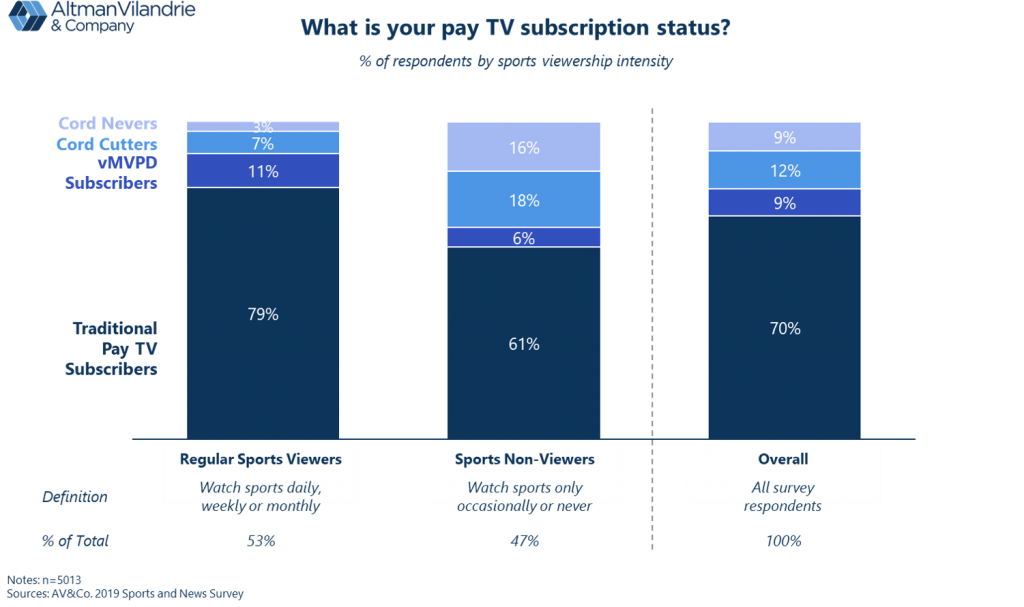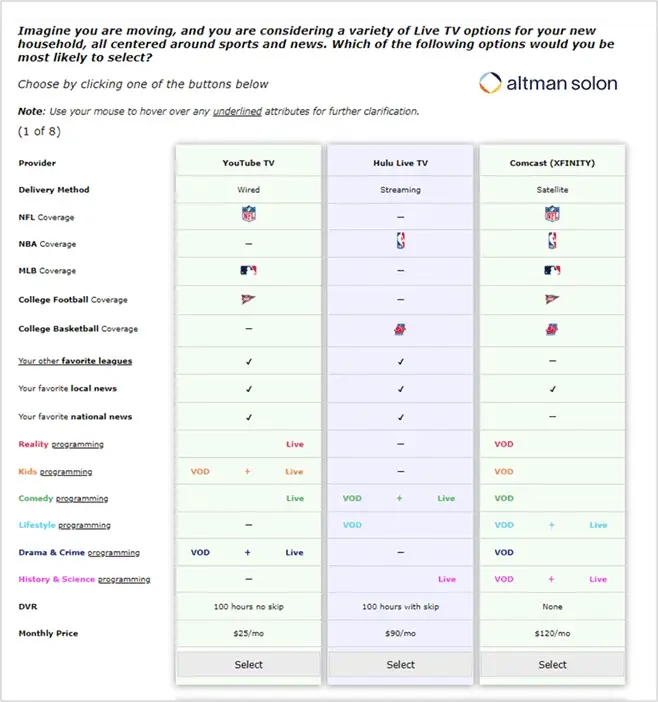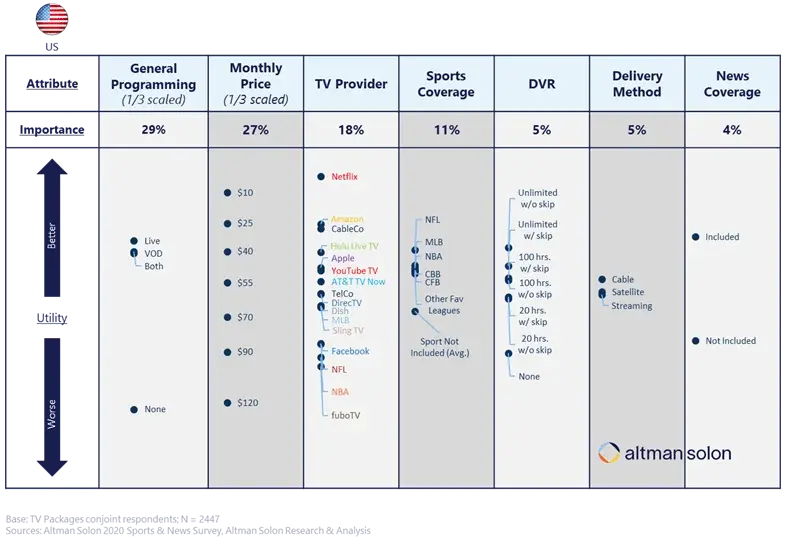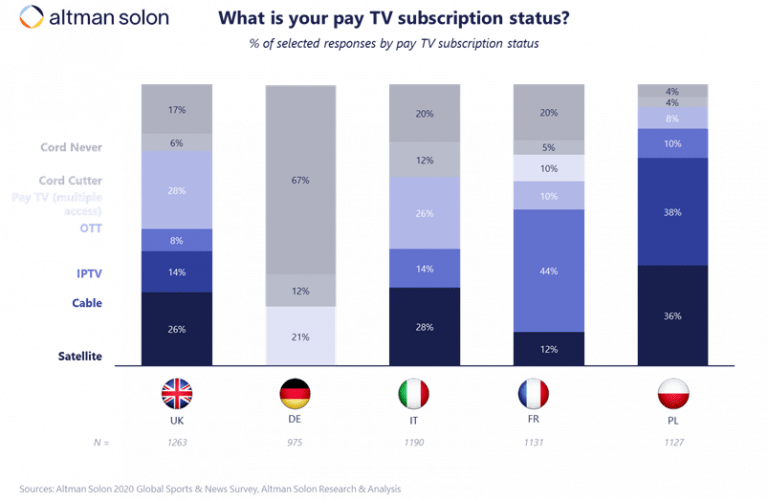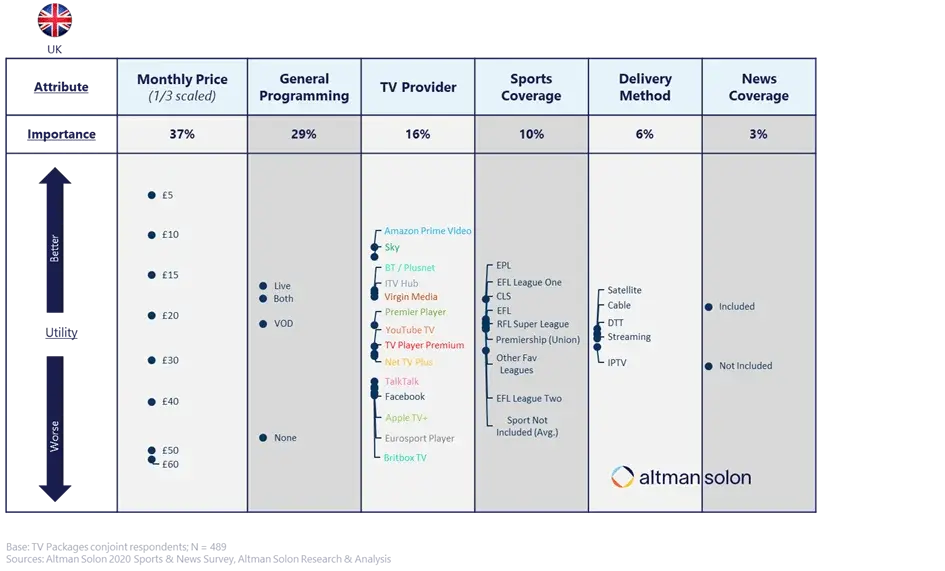Live sports and news have long been the lifeblood of pay TV and that relationship has only become more important in the age of streaming and on-demand video. In a new entertainment world seemingly devoid of appointment television, live sporting events and newscasts still cause global consumers to tune in at a specific time. And for pay TV providers, they attract sports and news viewers who subscribe to pay TV at much higher rates than consumers who do not watch sports and news.
For sports during COVID-19, TV ratings are down in the U.S. and across nearly every major sport for reasons that are still unclear. While TV ratings for news programs have been strong, it could be a temporary bump as consumers are focused on pandemic- and election-related information. After the pandemic – and with the continued growth in streaming options and more sports properties and news networks connecting directly to consumers – will sports and news fans still be watching on pay TV?
Globally, live sports and news are watched by most consumers, with 70% or more of respondents saying they watch at least monthly. That percentage jumps to 90 and above for Latin American countries tested, and more than half of Latin American consumers say they watch sports monthly. In contrast, less than half of respondents in Europe say they watch sports monthly, with many more people preferring to watch only news.
We found that respondents who watch sports and news monthly subscribe to pay TV at higher rates than sports and news non-viewers. More than 70% of sports fans who watch sports monthly subscribe to traditional MVPDs (cable and satellite providers). In contrast, less than 60% of sports and news non-viewers subscribe to pay TV. In the U.S., 72% of sports and news viewers subscribe to pay TV versus only 39% of sports and news non-viewers. In Europe, the market for live TV is very different compared to the U.S., with national free-to-air broadcasters playing an important role. This results in high contrasts in pay TV subscribership and penetration.
As the results above show, sports content is valuable to consumers globally and many are willing to pay for it. Sports are effective at driving viewership, paid subscribership and uptake of new products and services. The global appeal and commercial impact of sports means that sports properties, investors, and media partners will focus on creating preferred destinations and products for sports fans globally to capture value. Leagues will continue making rights deals in global markets to expand their reach and acquire new fans, investors will continue seeking ownership in top-tier and lower-tier clubs in established and emerging markets, and media partners will continue seeking to differentiate their offerings to appeal to sports fans (i.e. creating the Netflix or Twitch of sports).
In the U.S., sports are the backstop of pay TV
The television industry in the U.S. relies on consumers paying a monthly subscription fee for a pay TV service, including traditional providers and virtual MVPDs (multichannel video programming distributors). How important are sports to pay TV penetration in the U.S.? We found that sports are must-have programming for pay TV, with 86% of the sports fans who watch sports monthly subscribing to traditional or virtual MVPDs (Internet-based TV like YouTube TV or Hulu Live). In contrast, only 60% of sports non-viewers are subscribing to pay TV.
To dig still deeper into the impact of sports and news on U.S. pay TV adoption, we designed a conjoint instrument that enabled us to quantify interest in pay TV offers that included or excluded coverage of major sports leagues, local and national news, and other programming from different provider types (traditional MVPDs, vMVPDs, SVODs, sports leagues) at different price points. This allowed us to understand the attributes of a pay TV offer that consumers care most about. To do this, we presented respondents with a variety of hypothetical pay TV offers and asked them which offer they would most likely select when considering live TV options. The exhibit below shows an example set of options seen by respondents.
As shown in the exhibit below, the results using this instrument indicate that programming is the most important factor to respondents in selecting a TV package (29% importance), followed by price (27%), provider (18%), and sports coverage (11%). It also showed consumers would prefer Netflix, Amazon, and cable companies to other traditional and virtual MVPDs as a provider when selecting a pay TV offer. This data shows that there is a future in which sports-focused consumers would be willing to pay for sports through a non-traditional pay TV provider like Amazon or Netflix.
In Europe, sports compete across pay TV, OTT, free-to-air TV
The market for live TV in Europe is very different compared to the U.S., with national public and private free-to-air broadcasters playing an important role. This results in high fragmentation and contrasts in pay TV penetration. While the U.K. is rather comparable to the U.S., with only 23% not paying for live TV, in Germany only 21% said they have a subscription. Other differences are defined by delivery methods with some countries heavily relying on satellite services such as Germany, Poland, and Italy.
The conjoint analyses in European countries highlighted higher price sensitivity compared to the U.S. (see U.K. example below). Price was the most important factor to respondents in selecting a TV package in the U.K. (37%) and all other European countries tested. The other most relevant factors for respondents in selecting a TV package include general programming (29% importance), TV provider (16%), and sports coverage (10%). While live TV is still key compared to video-on-demand options, respondents appear to be in favor of receiving both from a single platform.
Altman Solon conducted the 2020 Global Sports & News Survey in August-September with more than 14,000 respondents across 10 countries. Altman Solon tapped its expertise across Europe and the Americas following this summer’s merger of the U.S.-based Altman Vilandrie and Europe-based Solon Consulting to form the world’s largest Telecommunications, Media, and Technology consulting firm.



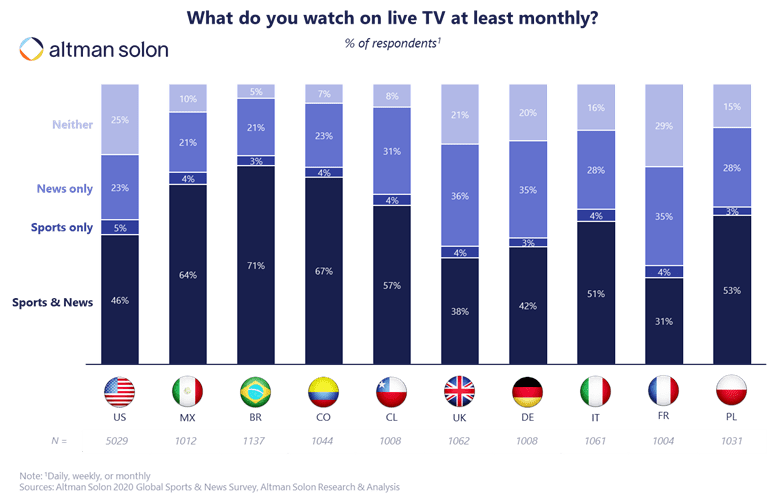
-1.png?width=192&height=90&name=Sports-and-News_2%20(1)-1.png)
-1.png)

